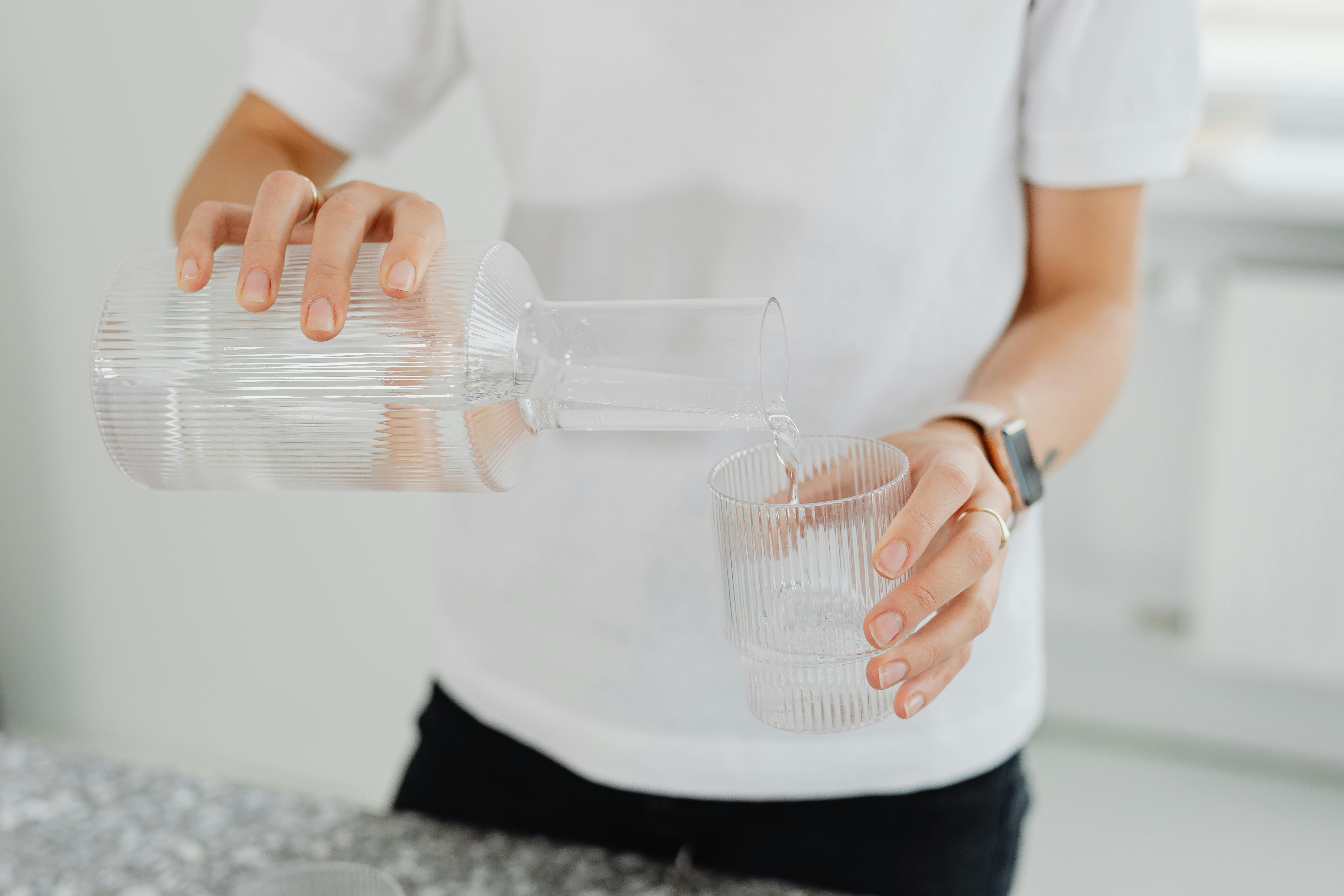Water Intake: Your Personalized Daily Target
Water Calculator
Quick Profile
Pick what fits best—this adjusts activity/climate defaults (you can still edit on the right).
Hydration Setup
- Base (35 mL × kg): — L
- Exercise (+12 mL/min): — L
- Life stage: — L
- Climate: ×1.00
- Goal tweak: ×1.00
Spread your intake across the day and drink to thirst during activity.

Key Takeaways
- Daily water needs vary with body size, activity, climate, diet, and life stage.
- A practical starting point is 35 mL per kg body weight, plus about 12 mL per exercise minute.
- Hot or humid weather and high altitude increase needs; sip regularly rather than chug at once.
- All fluids count toward hydration, and water-rich foods contribute ~20–30% of intake.
- Use thirst and urine color (pale straw) as quick hydration checks.
Hydration supports temperature regulation, cardiovascular function, digestion, cognition, and physical performance. Use the calculator above to tailor a daily target to your weight, activity, climate, and life stage, then spread your intake through the day.
How much water do I need?
There isn’t a single number for everyone. The table below lists broad daily totals (fluids + the water that’s naturally in foods). Your personal target may be higher on hot days or during exercise.
| Group | Age | Approx. total per day | Typical from drinks* |
|---|---|---|---|
| Infant (w/ foods) | 4–12 months | ~0.8–1.0 L | ~0.6–0.8 L |
| Toddlers | 1–2 yrs | ~1.3 L | ~1.0 L |
| Preschool | 3–5 yrs | ~1.7 L | ~1.3 L |
| School-age | 6–12 yrs | ~1.9–2.4 L | ~1.4–1.9 L |
| Teens | 13–18 yrs | ~2.3–3.3 L | ~1.8–2.6 L |
| Adults | 18+ yrs | 2.7 L (women), 3.7 L (men) | ~2.0 L (women), ~2.7 L (men) |
| Pregnancy | — | ~3.0 L | ~2.2 L |
| Breastfeeding | — | ~3.8 L | ~2.9 L |
*Many people get ~70–80% of total water from drinks and ~20–30% from foods. Values are broad educational ranges (not medical advice).
Simple timing tips
- After waking: a glass of water to start the day.
- Before meals: 1 glass ~30 minutes before eating.
- During exercise: ~150–250 mL every 15–20 minutes as a starting point; adjust for heat and sweat rate.
- After exercise: if you track weight, ~1.5 L per kg body mass lost; otherwise sip until urine is pale.
When to be cautious
- Kidney, heart, or liver conditions; diuretics; or clinician-directed fluid limits.
- Don’t overdo it: avoid repeatedly drinking >1 L per hour for long periods without electrolytes.
How this calculator works
We estimate a baseline of 35 mL per kg body weight, add 12 mL per minute of moderate–vigorous exercise, then apply climate (+20% for hot/humid) and life-stage adjustments (pregnancy +0.3 L, breastfeeding +0.7 L). Use the result as a starting point and adjust to thirst and conditions.
For personal medical guidance, speak with a qualified health professional.